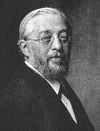issue contents
May 2009 issue

Cover illustration: Electron-density isosurface of silicon coloured with electrostatic potential (red for lowest and blue for highest), together with a convergent-beam electron-diffraction (CBED) pattern of silicon. The red regions between neighbouring atoms indicate that the electrostatic potential is lowered due to the excess (bonding) electrons. The electrostatic potential and electron density were determined using a CBED structure-refinement method [Ogata et al. (2008), Acta Cryst. A64, 587-597]. The figure was drawn using VESTA [Momma & Izumi (2008), J. Appl. Cryst. 41, 653-658].
feature articles



 journal menu
journal menu




























